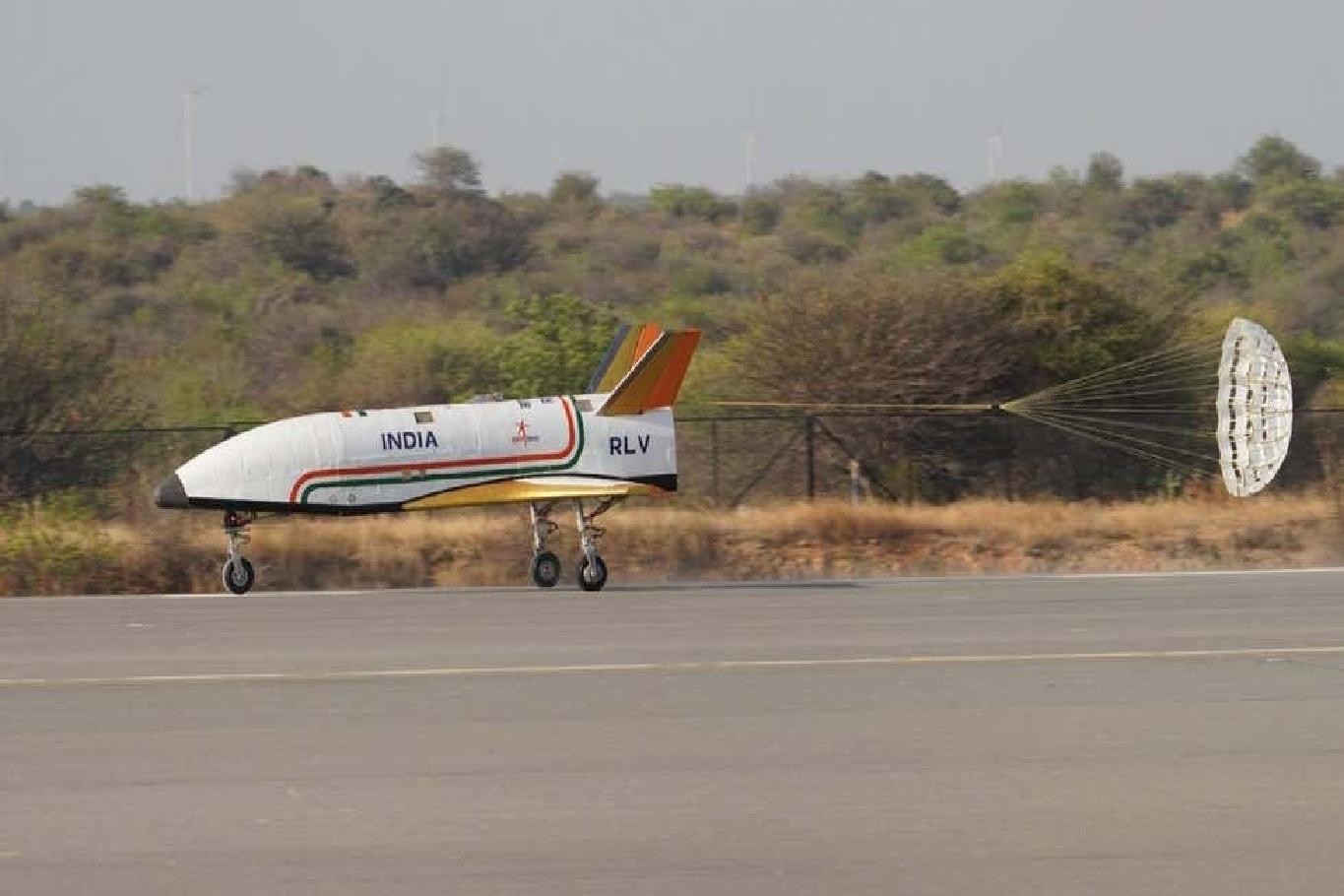
The Indian Space Research Organisation (ISRO) accomplished the Pushpak Reusable Landing Vehicle (RLV) LEX 02 landing experiment at the Aeronautical Test Range in Chitradurga, Karnataka, marking the second in a series of experiments conducted by the space agency. ISRO confirmed the success of the endeavor through a tweet, noting that the winged vehicle, Pushpak (RLV-TD), executed an autonomous landing with precision on the runway after being released from an off-nominal position.
The winged vehicle, known as Pushpak, was airlifted by an Indian Air Force Chinook Helicopter and subsequently released from an altitude of 4.5 km. Pushpak autonomously navigated towards the runway upon release, making cross-range corrections along the way. It utilized its brake parachute landing gear brakes and nose wheel steering system to precisely land and come to a halt on the runway.
ISRO deemed the mission a success as it effectively simulated the approach and high-speed landing conditions experienced by RLVs returning from space. This accomplishment reaffirmed the reliability of domestically developed technologies in navigation, control systems, landing gear, and deceleration systems crucial for the autonomous landing of space returning vehicles.
Moreover, ISRO highlighted the reuse of the winged body and all flight systems from the RLV-LEX-01 mission in RLV-LEX-02 after obtaining necessary certifications and clearances. This demonstration showcased the capability to reuse flight hardware and systems, with structural enhancements made based on observations from the previous mission to withstand higher landing loads.
The mission’s execution involved collaboration among various agencies, including the Vikram Sarabhai Space Centre (VSSC), the Liquid Propulsion System Centre (LPSC), and the ISRO Inertial Systems Unit (IISU). Additional contributions from agencies such as the Indian Air Force (IAF), Aeronautical Development Establishment (ADE), Armament Research and Development Establishment (ADRDE), and Centre for Military Airworthiness and Certification (CEMILAC) were crucial to the mission’s success. The mission was guided by Sunil P, Programme Director of Advanced Technology and Systems Programme at VSSC. Additionally, J Muthupandian, Project Director of RLV, and B Karthik, Deputy Project Director of RLV, played key roles.












